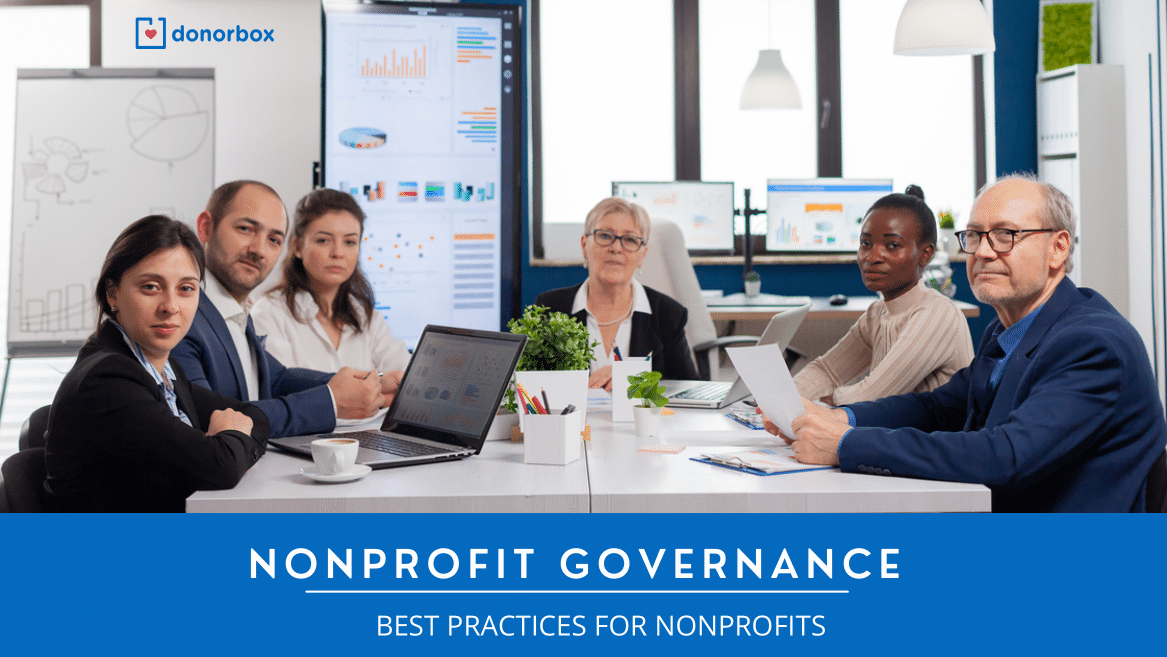Nonprofit Governance: Best Practices for Nonprofits
Creating an effective leadership structure for your organization can feel daunting. We've got you covered with six models of nonprofit governance and some pitfalls to avoid!

Creating an effective leadership structure for your organization can feel daunting. We've got you covered with six models of nonprofit governance and some pitfalls to avoid!

Nonprofit governance is simply the process of providing leadership to a nonprofit organization. Each key player in a nonprofit organization – board directors, officers, executives, staff, volunteers, and members – plays a critical role in ensuring that a nonprofit is governed in a way that will lead its organization to achieve its mission.
Truly effective board director governance involves everything from making worthwhile policies and strategic decisions, setting the overall direction of a nonprofit, ensuring that all nonprofit stakeholders understand their responsibility.
Ensuring that the right board directors are in place and are governing properly can be the difference between a nonprofit that fails, and one that thrives.

Though the needs of every nonprofit are unique, every nonprofit needs a board of directors that follows a specific set of bylaws. Nonprofit bylaws are essentially a nonprofit’s operating manual, and supplement the rules already defined by the state regarding how a nonprofit should be run.
There are 6 primary types of models for nonprofit board governance.
In this model, the primary goal of board directors is to fundraise. They are well-connected professionals who can make important networking introductions and have the means to contribute financially themselves. They aren’t responsible for a lot of decision-making.
This model involves formal committees designated for each area of a nonprofit’s operations. These committees help run and make decisions on behalf of various parts of a nonprofit’s operations.

The advisory model is a more traditional nonprofit governance model. Adapting an advisory model means electing subject matter experts who will advise the nonprofit’s founder.
In this governance model, input from the community about their decisions for the nonprofit is important. This is a newer, less traditional type of governance model.
In this form of governance, all members have equal say. There is no hierarchy on the board of directors, as members must work well together. This is a less formal setup for a nonprofit board of directors.
Oftentimes, nonprofits will choose to combine multiple of these models to create something that works for their organization. For example, a board may combine an Advisory model and a Community Engagement model in order to run their boards as effectively as possible.

The hallmark key to running any nonprofit board of directors effectively, regardless of the type of model it ensues, is to be proactive. Plan ahead with your board. Know your board. Be ready for sudden changes in it. The better you can implement this general rule of thumb, the better your board of directors will be. Below are a series of best practices your board can follow that will truly empower your organization.
Agendas will keep your board organized, on topic, and will allow you to allot time for every important item that needs to be discussed. An agenda focuses the room and allows for maximized productivity – it makes the meeting “worth it”. Here is a sample agenda for your reference.
Designate a notetaker to take notes – preferably a staff member who is not a decision-maker and not a board director themselves. Have the notetaker format these notes the same way every time, so that when looking back at the notes, the board of directors knows how to read and use them efficiently.

How productive can a meeting be if decisions are made or actions need to be taken outside of the meeting, but no one is held accountable to them? By reviewing minute notes and assigning specific tasks and due dates to board directors, things will actually get done. Directors will be held accountable for what they agreed to do in the meeting.
Oftentimes, board members may be reluctant to publicly share what changes they’d like to see in regards to how the board is being run. They may feel reluctant to share what sort of help they need, whether that be fundraising practice, policy creation, or more.
Making a point to regularly check in with your directors will not only empower your organization to run smoothly but will let your board members know how much you respect them and want them to stick around.
The most important aspect of a succession plan is that it’s proactive. Board member responsibilities, terms, and progress should be documented ahead of time and as meetings occur so that a responsibility hand-off to a replacement director is seamless. Replacing outgoing board members with enough time to fill the position with a quality candidate is critical.

Below are some very common nonprofit governance errors that boards of directors make, and how to fix them.
It is absolutely critical that any decision a board of directors makes is done in total privacy. Privacy is essential both internally and externally. For example, when board directors vote on an issue, who votes for which side of the issue must be kept confidential. This is because having who swayed which way become known to all directors could cause arguments, bitterness, and ongoing dissent between members. Externally, staff members, donors, volunteers, and any other stakeholder cannot know about decisions being made until they are intentionally publicized. Prematurely sharing board discussions can impact a nonprofit’s reputation.

All board members must be aware of the tax implications of running a nonprofit. There are numerous tax implications related to salaries, employees, contractors, political lobbying, and beyond, that a board of directors must manage. Failing to comply with specific tax requirements could put your board, and in turn, your organization, at grave risk.
Sure, boards of directors are meant to discuss and make decisions that impact a nonprofit. More importantly, though, directors should take part in implementing these decisions. They should involve themselves with the staff members, donors, volunteers, and other constituents. Board members that fail to get hands-on with an organization will come across as more of an ‘irritation’ to staff members; as untrustworthy leaders who are making decisions without truly understanding some of the challenges those decisions may create.
Recruit board members who are experts within a variety of industries who you believe can help your nonprofit. Recruit both women and men, and persons of various colors and ethnic backgrounds. As long as the way you recruit is relevant to the type of work you are doing and the mission you are trying to achieve, recruiting as diverse a set of board of directors as possible will ensure that your organization and its beneficiaries are doing well.

So let’s reiterate this point. Strategic and effective board recruitment and management will place your board and nonprofit organization in the best position possible to achieve your critical mission.
If you’re in search of a powerful and affordable fundraising solution, Donorbox is here to help. We help nonprofits with advanced fundraising tools such as crowdfunding, peer-to-peer fundraising, text-to-give, membership campaigns, recurring donation forms, and more. Do have a look at our website to learn more.
Our nonprofit blog offers you insights on management and fundraising. Do subscribe to our newsletter for the curated tips and resources delivered to your inbox every month.

Subscribe to our e-newsletter to receive the latest blogs, news, and more in your inbox.